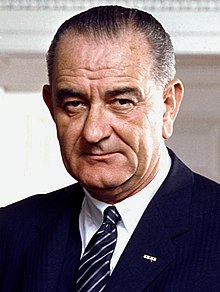 |
| One of Andy Warhol's famed self-portaits |
The United States laws live off the Constitution of the United States. On this day in 1787, the Constitutional Convention begin their debate on the first draft of the Constitution. It was adopted a month later on September 17th, but ratified on June 21st. The Constitution went into effect on March 4th, 1789.
These next two evens will not be very content, but are some interesting events nonetheless. On this day of August 6th, 1890, the electric chair makes its first execution on William Kemmler of Auburn Prison, New York. Kemmler did not die on the initial 700-volt shock that lasted 17 seconds, but died on the second 1,030-volt shock that lasted two minutes.
 |
| Image of Hiroshima then and now |
 |
| 36th US President, Lyndon B. Johnson |
In further advancement of the Civil Rights Movement, U.S. President Lyndon B. Johnson signs the Voting Rights Act on this day in 1965. The Voting Rights Act grants African Americans the right to vote. No federal, state, or local elections could deny African American votes. In some states with high black population, such as Mississippi, saw the African American voter turnout rate increase from 6 to 59 percent in five years. When Richard Nixon became president, he strengthened the Voting Rights Act and allowed all voters 18 and over to vote.
No comments:
Post a Comment